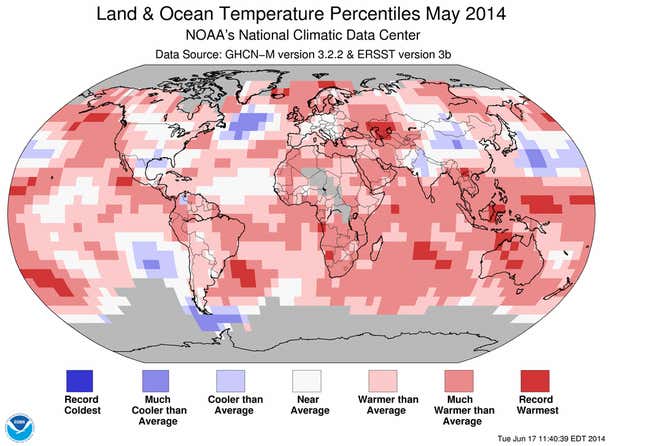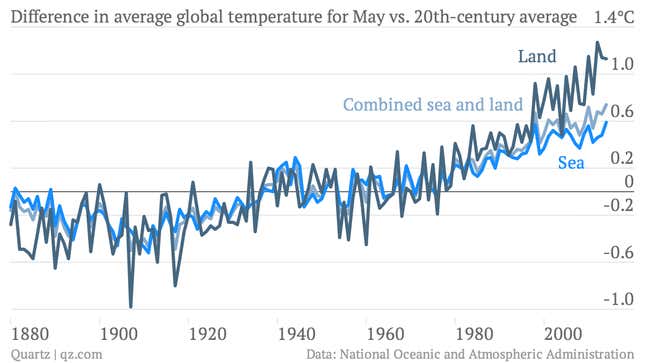Thanks to unusually balmy seas, global surface temperatures around the planet in May were 1.33°F hotter than the long-term average—the biggest spike for any month since records began in 1880, according to the National Oceanic and Atmospheric Administration (NOAA). The average temperature of the planet’s surface for the hundred Mays of the 20th century was 58.6°F (14.8°C).

So how much hotter are we talking here? May in southern Spain was between 4°F and 5°F warmer than normal, and South Koreans weathered temperatures that were up 3.1°F. In fact, Latvia, Norway, South Korea, and southern Australia all experienced their toastiest May in at least a century. Here’s the NOAA’s roundup of temperature and climate anomalies around the world in May:
Of course, that’s the average, combining land and sea temperatures; it doesn’t mean May was a scorcher everywhere. For one thing, the global land surface temperature jumped 2°F above the long-term average, but was only the fourth-highest May on record. The real jump came from the ocean, where surface temperatures rose 1.06°F above the 20th-century average of 61.3°F, the biggest spike on record.

It also doesn’t mean May was hotter than August. What the NOAA is measuring here is called “temperature anomaly,” meaning a given period’s departure from the long-term average for that time of year. The reason it uses this approach, rather than just measuring the absolute value of the average global temperature, is that there are huge variations among different months and disparate places. This way, the NOAA captures temperature variation trends without having to adjust for how much colder December is in most places than, say, July—or Singapore versus the Arctic.
The trend that’s showing is alarmingly consistent. Of the five warmest Mays since 1880, four have happened in the last five years. (The other was 1998.) The last time May’s average came in below the 20th-century average was 1976.
It’s not just May, though. The last time any month fell below the long-term average was February of 1985. In other words, it’s been hotter than average for 351 straight months.
